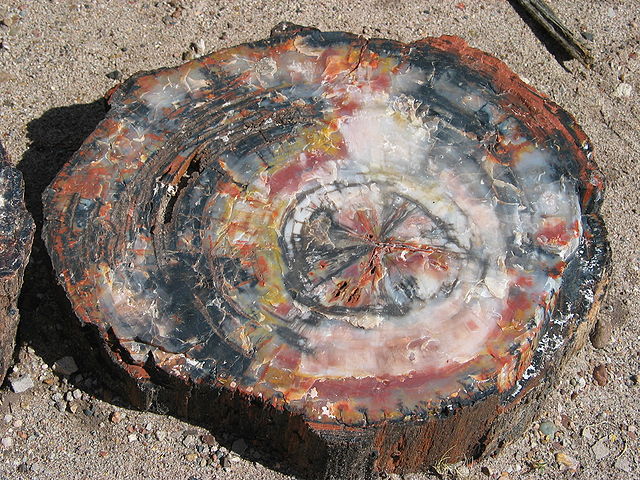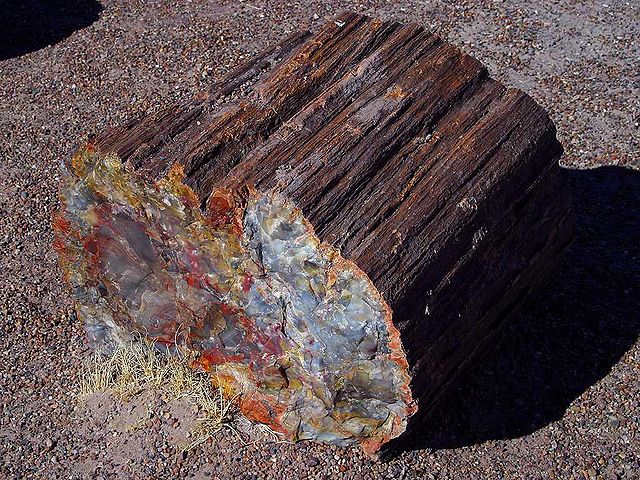In geology, petrifaction or petrification is the process by which organic material becomes a fossil through the replacement of the original material and the filling of the original pore spaces with minerals. Petrified wood typifies this process, but all organisms, from bacteria to vertebrates, can become petrified. Petrifaction takes place through a combination of two similar processes: permineralization and replacement. These processes create replicas of the original specimen that are similar down to the microscopic level.
Tree remains that have undergone petrifaction, as seen in Petrified Forest National Park
Petrified wood, also known as petrified tree, is the name given to a special type of fossilized wood, the fossilized remains of terrestrial vegetation. Petrifaction is the result of a tree or tree-like plants having been replaced by stone via a mineralization process that often includes permineralization and replacement. The organic materials making up cell walls have been replicated with minerals. In some instances, the original structure of the stem tissue may be partially retained. Unlike other plant fossils, which are typically impressions or compressions, petrified wood is a three-dimensional representation of the original organic material.
Polished slice of a petrified tree from the Late Triassic Epoch (approximately 230 million years ago) found in Arizona. The remains of insects can be detected in an enlarged image.
Petrified log at the Petrified Forest National Park
Microscopic view of petrified Callixylon wood
Petrified wood mineralized with carnotite from St. George, Utah





